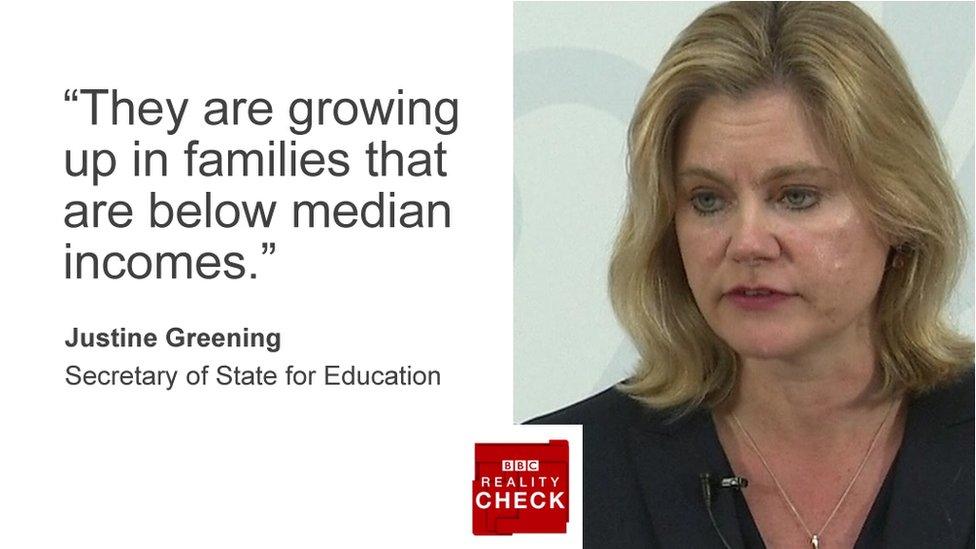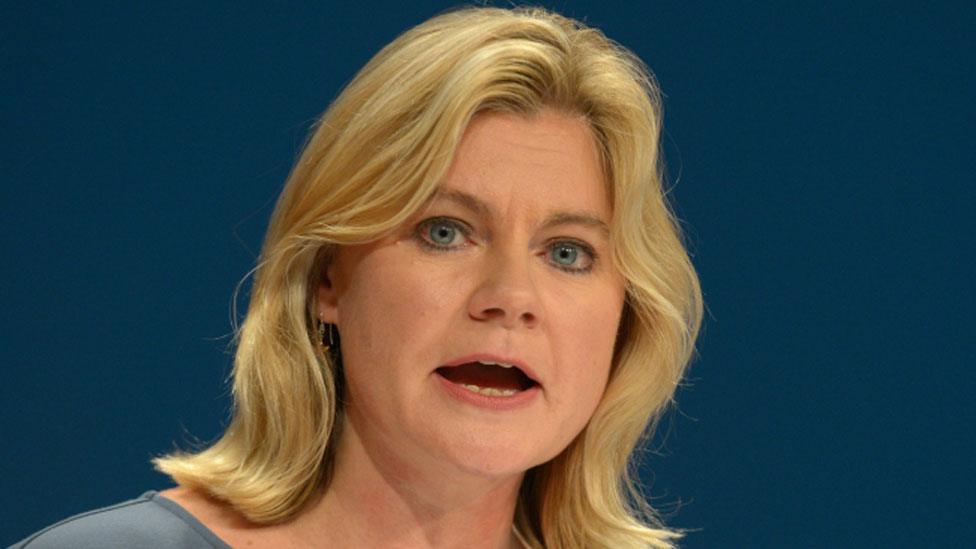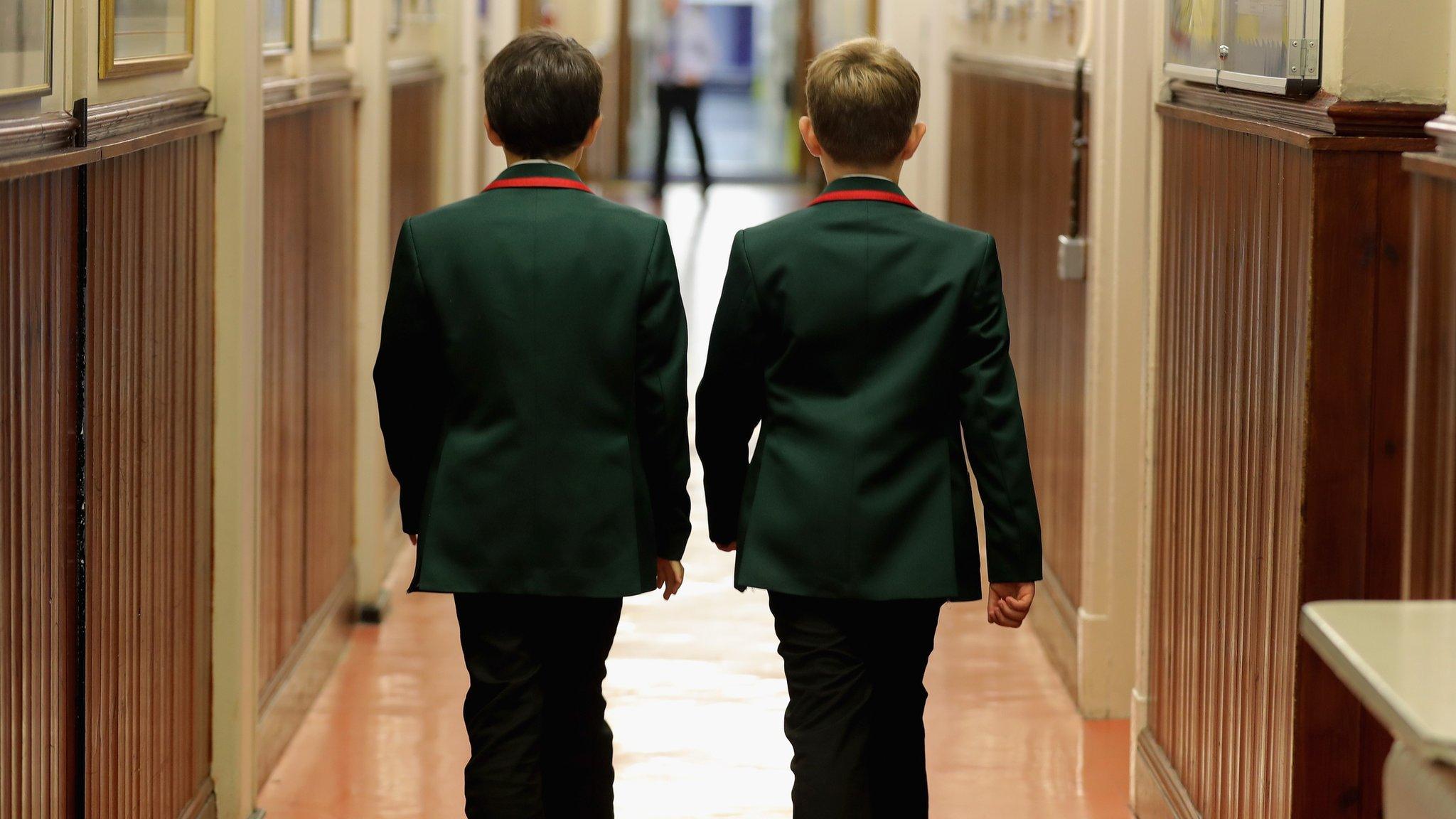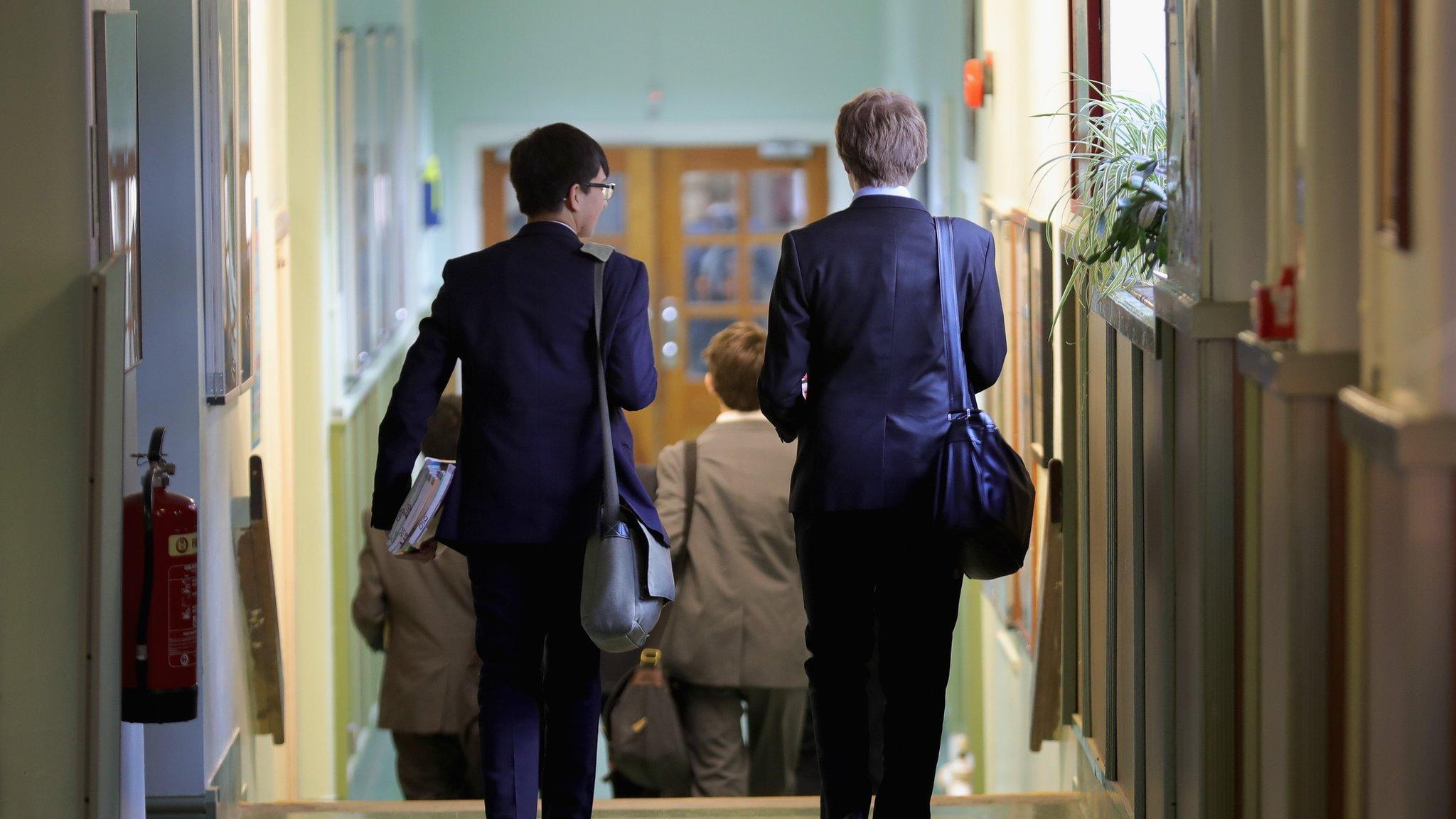Reality Check: What are 'ordinary working families'?
- Published

Reality Check says: The government defines "ordinary working families" as those that are not eligible for pupil premium but have below average incomes. It believes that accounts for about one third of all pupils in England, but this calculation is a work in progress.
Education Secretary Justine Greening on Thursday kicked off a consultation on plans for grammar schools in England, saying that they must do more to help "ordinary working families" as the government pushes ahead with plans to allow more selective schools to open.
There is no official definition of an "ordinary working family" but Ms Greening said on the Today Programme: "They don't perhaps qualify for free school meals - for pupil premium - but actually they are growing up in families that are below median incomes."
The household earning the median income is the one for which half of families have a higher income and half have lower.
The Pupil Premium is a pot of money set aside for children who are in care, eligible for free school meals or have had free school meals at any point in the last six years.
Pupils are eligible for free school meals if their family is on one of a range of benefits or has a household income of less than £16,190.
So, if earning above £16,190 puts you at the bottom end of the "ordinary working families" definition, how is the government defining the top end of the range?
The paper published on Wednesday, external included the first attempt by government statisticians to come up with figures that set out how many children from different income brackets go to grammar schools.
In the past, the only figures to help with this have been those covering how many children eligible for pupil premium go to particular schools, so expanding these statistics is an ambitious project.
What the statisticians have done is to attempt to match individual pupils in schools with their families' income through looking at tax payments and tax credits details.
These figures have then been adjusted to take into account things like household size, because if there are two families with identical household incomes, one of which has one child and the other has four children, their standards of living will not be the same.
Taking all these adjustments into account, the median household income comes out as £20,000. However, some families earning more than £20,000 in total will still fall within the definition of an ordinary working family.
For example, a single parent's income would be adjusted upwards, so it could be compared directly with the standard of living for a couple.
For a two-parent family with two children, the government considers median income to be £33,000.
The government says 35% of all pupils in England, which is 2.5 million children fall into its definition of coming from ordinary working families, because they fall below the median income but are not eligible for pupil premium.
The government is consulting on how to improve the methodology because, for example, the income figures do not currently include households' earnings from self-employment. They also plan to adjust for housing costs in different parts of England. The consultation closes on 30 June.
This new analysis has been welcomed as providing more detail, external, although there have been warnings from some education groups that the new work on ordinary working families will reduce the focus on the disadvantaged families who are eligible for pupil premium.



- Published13 April 2017

- Published4 April 2017

- Published8 September 2016

- Published9 September 2016
